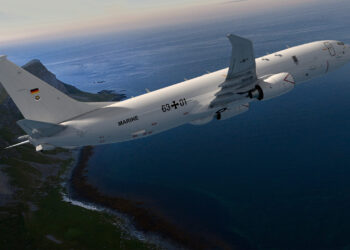VT Group, VT Shipbuilding (VTS) has commenced its second major export programme in three months after the High Commissioner for Trinidad and Tobago started the official steel cutting process for the first of three Offshore Patrol Vessels (OPV) on Wednesday (Jan 23).
Mrs Glenda Morean-Phillip, accompanied by Mrs Jennifer Boucaud-Blake, Permanent Secretary of Trinidad and Tobago’s Ministry for National Security, performed the steel cutting ceremony at VTS’ advanced facilities in Portsmouth Naval Base.
VT Shipbuilding Portsmouth Managing Director Francis Paonessa explained: “The Trinidad and Tobago programme, in addition to the start of work on three ships for Oman recently, will provide us with a healthy workload to 2011.
“We already have OPVs in service with the UK Royal Navy and the Trinidad and Tobago ships strengthen our position as a world leader in designing and building these types of ship. Our range of OPVs is attracting strong interest from other potential customers.”
The T&T OPVs are a new design that will be used to protect the rich oil and gas reserves located around the nation’s coastline. They will also be used for constabulary roles such as environmental protection, fishery protection and anti-drug operations.
In addition, they will take on a regional security role for the wider Caribbean region, including disaster response in the light of increased tropical storm activity in the region.
VT secured the contract against stiff international competition and has a historical relationship with the Trinidad and Tobago Defence Force Coast Guard, having built its first 102ft patrol craft some 40 years ago.
The latest design has speeds in excess of 25 knots with an overall length is 90.5 metres. It can accommodate a total crew up to 70 covering all ranks, but is capable of being operated by a crew of just 34. Over and above this there is dormitory space for a further 50 troops.
The long-range maritime patrol role is enabled by 35 days endurance and a range of up to 5000 miles at 12 knots. This allows the ships to poise at sea, and, when appropriate, close an area of interest to project force. Force projection is accomplished with the deployment of the ship’s armament, helicopter and boats or complement of embarked troops.
The ship carries a high speed interceptor and features a 20 metre long flight deck for a helicopter.
There is also the flexibility to allow various cargo combinations to be carried by making use of the space on the flight deck. This provides the capability to carry a combination of containers, stores, vehicles, scientific research equipment or other cargo. A 16 tonne capacity crane enables cargo to be discharged to a jetty.
Another attractive element is the through-life support VT will give the vessels. VT will guarantee the T&T Defence Force Coast Guard use of the ships for 300 days a year, allowing the Coast Guard to concentrate on operations rather than maintenance activities.
The first ship will be handed over in May 2009 with initial crew set to arrive this summer for training to be undertaken by VT joint venture Flagship Training. As an interim, VT is converting two offshore supply ships into Coastal Patrol Vessels (CPVs) at a yard in Trinidad and Tobago.
China says holds first dual aircraft carrier drills in South China Sea
China has conducted its first military drills with its two operational aircraft carriers in the contested South China Sea, state...









